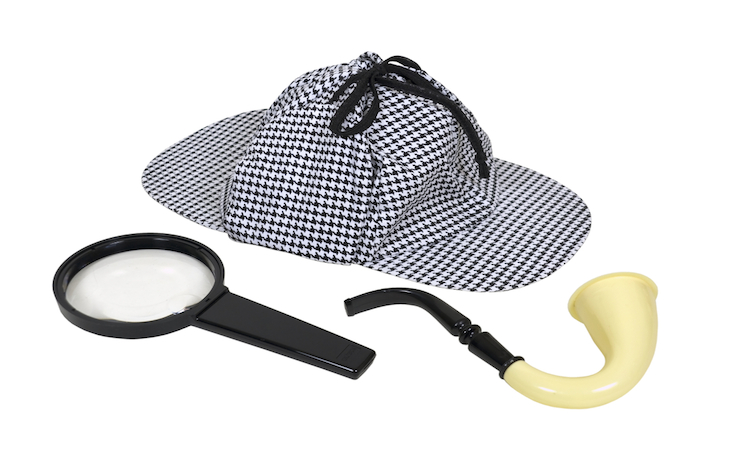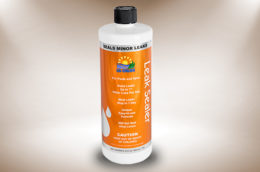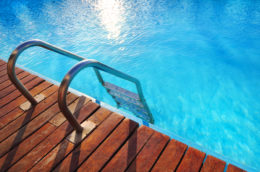Don’t look now, but pool water cooling-off season is just around the corner. It’s sneaky.…

How Do I Find Out Where My Swimming Pool is Leaking?
You’ve done the ever popular Bucket Test and I could hear your heart sinking from here. Don’t despair. I could wave a jaunty good-bye and leave you to your own devices but that’s not who I am. Let’s take a breath and tackle this together.
It’s Elementary
Now, get out your Calabash and don your Deerstalker (the pipe and hat that Sherlock Holmes used) and let’s check the clues. Leave your bucket in place but adjust the water level to match the pool level again. Now turn the pump off for 24 hours, check the levels and then turn the pump on and run it for 24 hours and check. If the loss is the same through all of this the leak is likely in the shell, light niche, liner or some non-circulating component. If the leak is greater when the pump is running, the leak is likely on the return or pressure side of your plumbing because being under pressure, it will force more water out of the leak. If the leak is less severe with the pump running it will likely be leaking on the suction side of the plumbing, i.e. between the drain or skimmer and the pump. A leak in the suction side will suck air under vacuum and not let as much water out while the pump is running. Think of a soda straw with a hole in it while you try to suck down that ice cold orange-crème soda compared to a garden hose with a hole squirting all over that freshly painted picket fence. Am I dating myself??
Once you isolate which component of your pool is leaking you can go a step further by using a syringe filled with dye. Most pool stores sell these “leak finders” or you can use a medical syringe, less needle, and fill it with food coloring. With the pump off and the water calm, put on your snorkeling mask and squeeze just a drop of dye at each suspected pipe opening or leak site. When you get to the right spot, you’ll see the dye quickly travel into the leaking pipe or fixture. Common sites are suction or return pipes and light niches. Don’t limit yourself to the actual pipe inlet but also the edges of the fixture where it meets the pool finish be it plaster, fiberglass or vinyl liner.
What about the Main Drain?
Main drains are a little trickier because they are covered with a grate. First, NEVER attempt to service a drain with the pump running. ALWAYS have an able-bodied swimmer observe from the pool deck for assistance in the event that you run into trouble and need help surfacing. I would suggest a Baywatch lifeguard but you won’t want anybody running in slow-motion if you’re stuck on the bottom of a pool. Suction entrapment is a serious issue and should not be taken lightly.
Remove the grate and do the same dye checks as before. Some drains may be equipped with a Hydrostatic Pressure Relief Valve. This is usually a spring loaded cap installed in the bottom port of the drain. The suction line to the pump is typically on the side of the drain sump. The HPRV is designed to allow ground water to relieve into the pool instead of floating the pool out of the ground. These are most common in high water table areas like the Coastal Southeast or Midwestern lowlands. On occasion, these valves will pop open to let water in but may get sand or grit in them and stick open. Other times, a suction pool cleaner may find itself on top of the drain and inadvertently suck the valve open and it sticks. In either scenario, this valve will create a leak. If that is the case, simply grab the cap and wiggle and twist it to flush the debris out and allow it to slap shut…problem solved!
Remember to replace the drain cover with a currently approved suction grate properly fastened to the sump. NEVER leave a drain uncovered!
Is There an Easy Fix?
OK, you’ve determined that you’re leaking about ¾ of an inch a day. You’re pretty sure it’s in the pipes and you don’t want to dig up your whole yard to find and fix it. Now what? The least expensive and easiest option at this point is to try a leak sealer. Lo-Chlor Leak Sealer is, I believe, the best on the market. Like many of the Lo-Chlor products, it originated in Australia and is formulated differently than many American counterparts. Check out my next post “What Can I Do If My Swimming Pool Is Leaking?” for tips on how to best use Leak Sealer.
I’m always happy to hear comments, tips or questions. I hope this post has been a help to you.
Written by Hank Graham




This Post Has 0 Comments